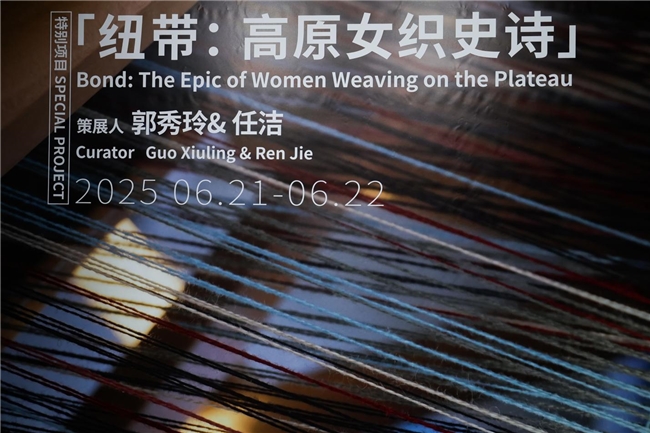
Shanghai, June 21st, 2025 – In the bustling heart of Zhangjiang High-Tech Park, often referred to as "China's Silicon Valley," the Hao Art Museum recently hosted a remarkable two-day exhibition titled "Threads of Heritage: The Epic of Plateau Women's Weaving." This exhibition, a six-month collaborative effort by two curators—Guo Xiuling, a seasoned entrepreneur with three decades of experience in the cashmere industry, and Ren Jie, a high school student who finds herself at the intersection of fashion, heritage, and art—was a powerful dialogue between the ancient and the modern, the plateau and the metropolis, and between generations. It showcased the artistry of plateau women's weaving, a craft passed down through centuries while exploring its contemporary relevance in today's industrialized society.
A Tale of Two Curators: Bridging Generations
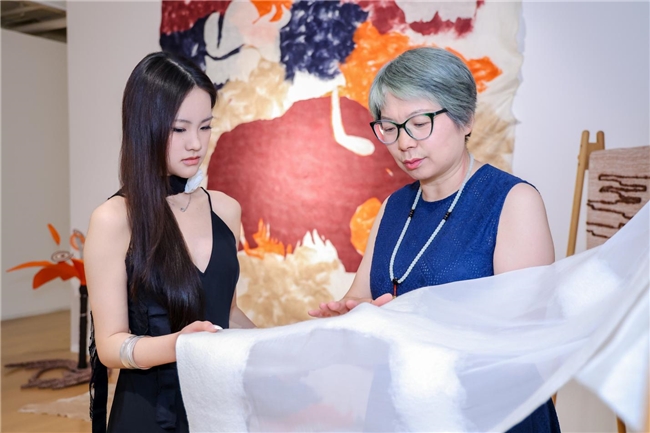
The exhibition stands as a powerful showcase of cross-generational collaboration. Guo Xiuling, the founder of Sandriver, China's first luxury cashmere brand to gain international recognition, has dedicated her life to preserving and promoting traditional weaving techniques. She dedicated considerable time in Tibet to gain a deeper understanding of the local environment and the lives of women there. Her work has elevated the status of Chinese craftsmanship on the global stage but has also provided livelihoods for over 400 women weavers on the plateau.
For Guo, the exhibition is an extension of her life’s work. "By preserving and promoting traditional weaving, we are not just keeping a cultural heritage alive," Guo said. "We are also providing these women with opportunities to support their families and communities. Their skills are not just a source of income; they are a source of pride and dignity."
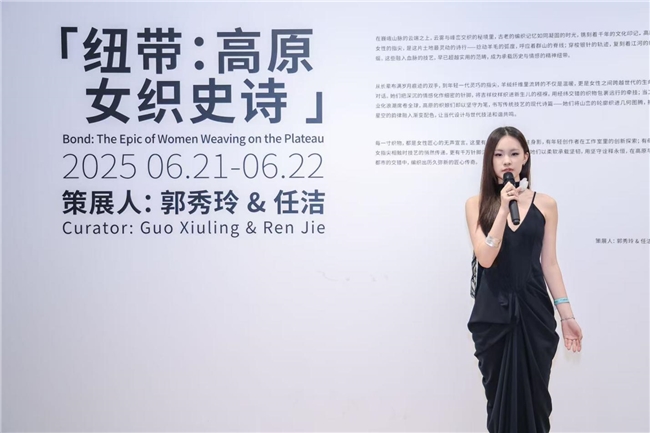
On the other side of the generational spectrum is Ren, a 16-year-old from an international high school in Shanghai. Growing up, Ren discovered her passion for art, fashion, and craftsmanship. While many Gen Zers prioritize price and brand popularity when making purchases, Ren is drawn not just to the brand itself, but to the ideas and messages behind the designs. She is particularly interested in how different brands and artworks embody themes like sustainability, feminism, and human connection.
"When I first saw these women weaving, I was struck by the beauty and intricacy of their work. What I witnessed were not mere products, but true works of art." Ren recalled. Her journey into the world of traditional weaving began serendipitously when she stumbled upon videos of plateau women weaving online. What started as a curiosity soon turned into a deep appreciation for the craft and the stories behind it. "What moved me even more was the resilience and creativity of the women themselves. Their craft is not just a skill; it shows their strength and determination."
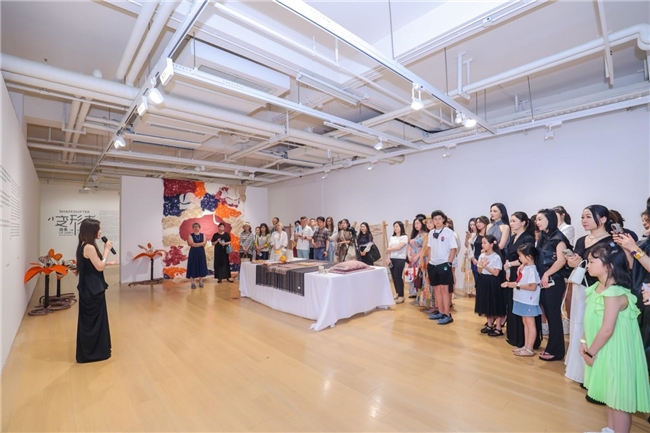
Ren’s youthful energy and innovative approach have breathed new life into this ancient art form. "I wanted to create an exhibition that showcases the beauty of traditional weaving but also highlights its relevance in today’s world," Ren explained. "These women’s stories are not just about the past; they are about the present and the future. Their craft is a source of inspiration for young people like me, showing us that tradition and innovation can coexist."
Flashmob: A Timeless Journey
The exhibition takes visitors on a journey through the history of plateau weaving, from its origins in the highlands to its modern interpretations in contemporary fashion. The intricate patterns, inspired by the natural landscapes of the plateau, are a visual feast. The geometric totems, reminiscent of mountain ridges, and the gradient color schemes inspired by the starry skies are a testament to the harmonious blend of tradition and innovation.
Each piece tells a story, not just of the craft but also of the women who created it. From the hands of the elders, marked by the passage of time, to the nimble fingers of the younger generation, the threads of tradition continue to weave a narrative of cultural continuity and resilience.
The short duration of the exhibition is a deliberate choice, mirroring the fleeting attention often given to the craft and the women who practice it. In a world where traditional craftsmanship is frequently overshadowed by mass production and fast fashion, the work of plateau weavers, though rich in cultural significance, often receives only temporary recognition.
This intentional brevity serves as a poignant reflection of the reality faced by these female artisans. Despite their extraordinary skill and dedication, their craft is often relegated to the margins, celebrated in brief moments of visibility before fading back into obscurity. By aligning the exhibition’s duration with this transient attention, the curators, Guo and Ren, aim to draw awareness to the precarious position of these women’s work in a rapidly modernizing world. The exhibition’s fleeting nature is not just a statement but a call to action—urging society to move beyond temporary admiration and toward sustained support for these artisans and their traditions.
A Dialogue Between Plateau and Metropolis
The exhibition is a celebration of the women who have kept this tradition alive. Their fingers, marked by years of labor, weave not just fabric but also stories of resilience, hope, and cultural identity. Each piece on display is a testament to their skill and dedication, a silent yet powerful declaration of women's craftsmanship.
As the two curators reckon, traditional craftsmanship is a source of economic empowerment for marginalized communities. For the plateau women weavers, their craft is not just a means of survival; it is a way to support their families, educate their children, and improve their quality of life. By creating a market for their products, we are providing these women with opportunities to thrive in a rapidly changing world.
Guo, who recently returned from a successful showcase in New York, spoke about her journey of bringing Chinese craftsmanship to the world. "Our cashmere products, infused with traditional plateau weaving techniques, have been embraced by international audiences," Guo said. "They are a reflection of our culture and heritage. I am proud to say that 'Chinese luxury' is no longer an oxymoron; it is a reality."
Ren, in her opening speech, shared her personal connection to the exhibition. "For me, by showcasing culture and traditional craftsmanship, I want to highlight the emotional and spiritual connection I feel with these women. Their patience, focus, and love for life are woven into every inch of fabric. This beauty, born from their hands and rooted in culture, deserves to be seen and appreciated by more people."
The exhibition underscores the importance of preserving traditional craftsmanship in a world increasingly dominated by mass production and fast fashion. Plateau weaving is not just a craft; it is a form of cultural expression that carries the history, values, and identity of a community. By preserving this craft, we are not just keeping a cultural heritage alive; we are also ensuring that future generations have access to the knowledge and skills that have been passed down through centuries.
The Power of Women: Strength and Resilience
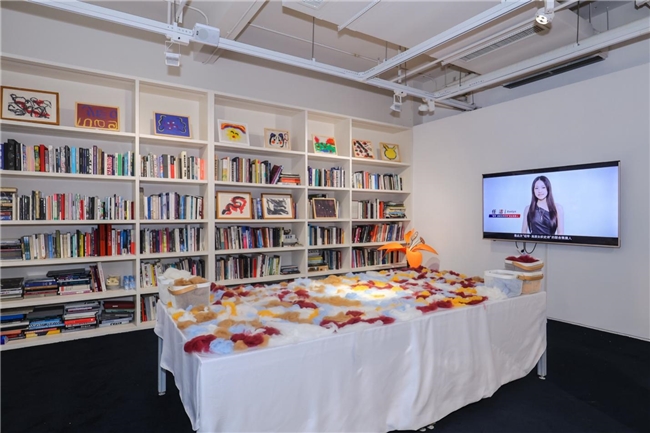
The exhibition powerfully underscores the importance of women having a voice in the textile industry, fashion, and business sectors. For too long, these industries have been dominated by men, with women’s contributions often overlooked or undervalued. However, as the exhibition demonstrates, women have been at the heart of these industries for centuries, creating the textiles and garments that are integral to our cultural heritage.
Both curators emphasized the theme of women's strength and resilience. "My mother has taught me that women can have their own careers, chase their dreams, and find a balance between family and work," Ren shared. "She has shown me that independence, resilience, and determination are not distant ideals; they are qualities that shine in every woman around us." Inspired by her mother, whom she calls a "woman of power," Ren emphasizes that her education is driven by a mission to empower more women to find their voices in society.
Guo echoed this sentiment, highlighting the economic empowerment of plateau women through their craft. "When women lead in fashion, they don’t just design clothes—they design the future. Fashion should be a platform for women to reclaim their narratives, redefine their identities, and reshape the industry with creativity and resilience."
By amplifying the voices of women artisans, the exhibition challenges traditional narratives of craftsmanship and fashion. It shows that women are not just the makers of these products; they are also the innovators, the leaders, and the storytellers. Their voices and perspectives are essential to the evolution of these industries, and their contributions deserve to be recognized and celebrated.
Sustaining the Legacy
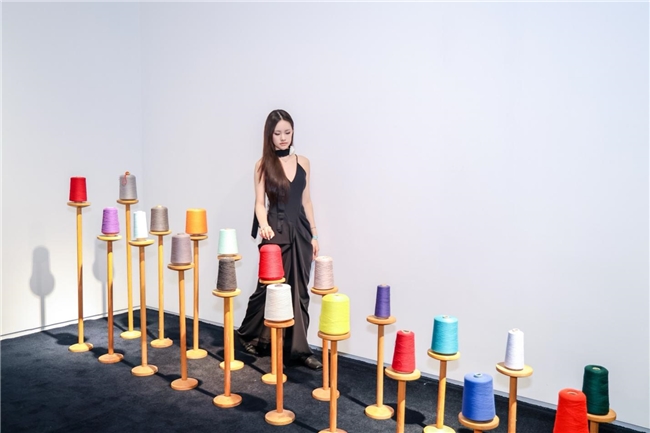
The exhibition is more than just a showcase of beautiful craftsmanship; it is a call to action. Both curators hope that the exhibition will not only raise awareness about traditional weaving but also create a market for these handmade products. "These women deserve recognition and fair compensation for their hard work," Ren said. "By supporting their craft, we are empowering these women and their communities."
Guo added, "Our goal is to create a sustainable future for traditional craftsmanship. By integrating it into contemporary design, we can ensure that it remains relevant and appreciated by future generations."
One of the key challenges in sustaining traditional craftsmanship is finding a balance between preserving the authenticity of the craft and adapting it to modern tastes and markets. The exhibition addresses this challenge by showcasing both traditional textiles and contemporary interpretations of plateau weaving. This approach not only highlights the versatility of the craft but also demonstrates its potential to evolve and thrive in the modern world.
For example, the exhibition showcases a diverse range of products, from traditional robes and scarves to contemporary fashion pieces that incorporate plateau weaving techniques. These products are designed to appeal to a diverse range of consumers, from those who appreciate the cultural significance of traditional craftsmanship to those drawn to the unique aesthetic of modern design.
The curators also emphasize the importance of education in sustaining the legacy of traditional craftsmanship. "We need to educate people about the value of these crafts," Ren said. "Many people don’t realize the amount of time, skill, and dedication that goes into creating these products. By raising awareness, we can create a greater appreciation for traditional craftsmanship and encourage people to support these artisans."
The Future
As visitors walked through the exhibition, guided by the curators, they were not only witnessing the beauty of plateau weaving but also participating in a cultural dialogue that bridges generations, geographies, and traditions. The exhibition serves as a reminder that, in the interwoven threads of tradition and innovation, we can find the strength to create a better future.
Although "Threads of Heritage: The Epic of Plateau Women's Weaving" has concluded its run at the Hao Art Museum, the exhibition is set to travel to other venues, continuing its mission to celebrate the artistry of marginalized communities and amplify the enduring power of women. Don't miss this opportunity to experience the timeless beauty and enduring spirit of plateau women's weaving.
